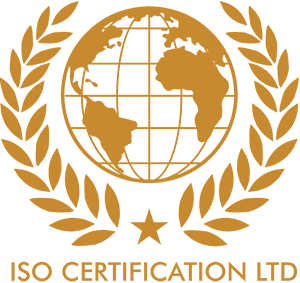T: 01202 779455M: 07808 666380E: Contact us


ISO 45001:2018
ISO 45001
ISO 45001 is an International Standard that specifies requirements for an occupational health and safety (OH&S) management system, with guidance for its use, to enable an organisation to proactively improve its OH&S performance in preventing injury and ill-health.
ISO 45001 is intended to be applicable to any organization regardless of its size, type and nature. All of its requirements are intended to be integrated into an organisation’s own management processes.
ISO 45001 enables an organisation, through its OH&S management system, to integrate other aspects of health and safety, such as worker wellness/well-being; however, it should be noted that an organisation can be required by applicable legal requirements to also address such issues.


Intended Users for the new standard- Simple, EVERYONE
It should not matter if your organisation is a micro business, or a global conglomerate ; if it is a non-profit organisation, a charity, an academic institution, or a government department. As long as your organisation has people working on its behalf, or who may be affected by its activities, then using a systematic approach to managing health and safety will bring benefits to it. The standard can be used by small low risk operations equally as well as by high risk and large complex organisations. While the standard requires that OH&S risks are addressed and controlled, it also takes a risk based approach to the OH&S management system itself, to ensure a) that it is effective and b) being improved to meet an organisation’s ever changing “context”.
This risk based approach is consistent with the way organisations manage their other “business” risks and hence encourages the integration of the standard’s requirements into organisations’ overall management processes.
Our ISO 45001 OH&S Management System
An ISO 45001 based OH&S management system will enable an organisation to improve its OH&S performance by:
• developing and implementing an OH&S policy and OH&S objectives
• establishing systematic processes which consider its “context” and which take into account its risks and opportunities, and its legal and other requirements
• determining the hazards and OH&S risks associated with its activities; seeking to eliminate them, or putting in controls to minimise their potential effects
• establishing operational controls to manage its OH&S risks and its legal and other requirements
• increasing awareness of its OH&S risks
• evaluating its OH&S performance and seeking to improve it, through taking appropriate actions
• ensuring workers take an active role in OH&S matters In combination these measures will ensure that an organisation’s reputation as a safe place to
work will be promoted, and can have more direct benefits, such as:
• improving its ability to respond to regulatory compliance issues
• reducing the overall costs of incidents
• reducing downtime and the costs of disruption to operations
• reducing the cost of insurance premiums
• reducing absenteeism and employee turnover rates
• recognition for having achieved an international benchmark (which may in turn influence customers who are concerned about their social responsibilities)
ISO 45001 does not state specific criteria for OH&S performance, nor is it prescriptive about the design of an OH&S management system. An organisation’s OH&S management system should be specific to meeting its own needs in preventing injuries and ill-health; consequently a small
business with low risks may only need to implement a relatively simple system, whereas a large organisation with high levels of risks may need something much more sophisticated. Any type of system may be capable of being in conformity with the requirements of the standard, provided
it can be shown to be appropriate to the organisation and is effective.
ISO 45001 does not specifically address issues such as product safety, property damage or environmental impacts, and an organisation is not required to take account of these issues unless they present a risk to its workers.
ISO 45001 is not intended to be a legally binding document, it is a management tool for voluntary use by organisations from SME’s upwards whose aim is to eliminate or minimise the risk of harm.



Want Expert Certification advice ? – Start your consultation with us now !
We will get to know you, your business, and what you need to achieve out of your systems and your certifications.
We take care of the whole process for you, answer all your questions and adjust our services to suit your resources and your individual business needs. We will be there for you to coach you through the preparation, through the audits and ongoing.
We assist in selecting your Conformity Assessment Body (CAB) to ensure they have the appropriate knowledge of your industry and the work you do, are realistic and take a value-adding approach.
We understand that every business is unique- we want this to be a meaningful and value-adding process for you.

